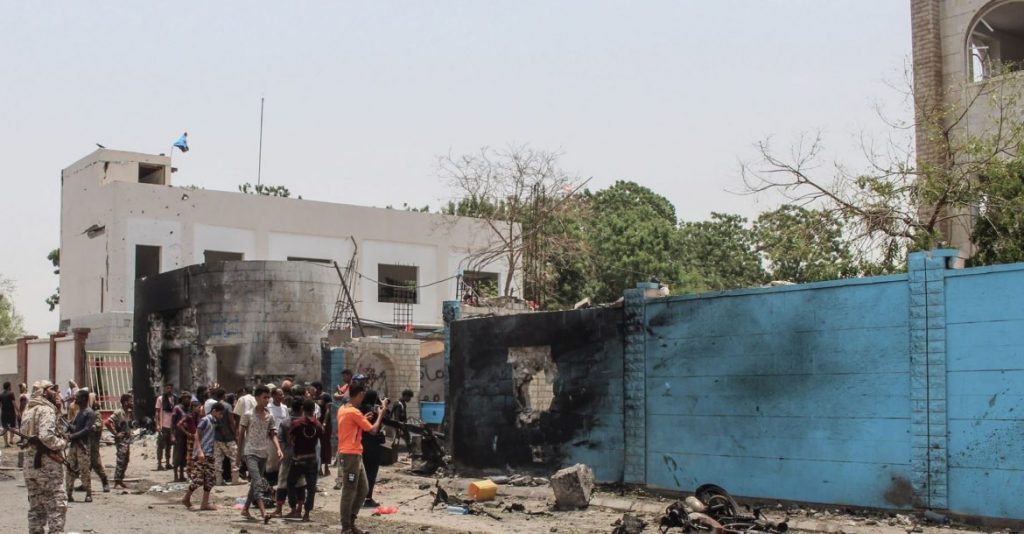ISIS revival in Aden further complicates war in Yemen’s south

After 15 inactive months, Islamic State fighters in Yemen have conducted a series of attacks in Aden as government forces and STC separatists fight for control
Islamic State said last week that fighters from its Yemen Province affiliate carried out a suicide bombing in the southern port city of Aden that killed three people and wounded others, the fifth attack the group claimed in Aden during August after more than a year of radio silence.
The recent series of attacks began with a suicide car bombing at a police station in Aden’s Sheikh Othman district that killed 13 people and wounded several more on August 1, according to Yemen’s interior ministry.
In a statement claiming responsibility for the attack, its first in the de facto capital Aden since March 2018, ISIS said the bombing had killed and wounded dozens of police officers and members of the Security Belt forces, which is backed by the United Arab Emirates. ISIS also released a picture of a man they claimed was the suicide bomber.
On the same day, Yemen’s Houthi rebels targeted Aden in a drone and missile attack that killed over 30 people, including Munir “Abu al-Yamama” al-Mashali, a senior southern security official aligned with the secessionist Southern Transitional Council, which dominates the Security Belt forces.
Two days later, ISIS claimed its fighters had assassinated a Security Belt forces member in Aden, releasing four images purportedly showing the killing.
On August 13, ISIS claimed yet another assassination, saying its fighters killed a Yemeni soldier with a silenced submachine gun. Three images released showed the killing of a man in a car, and text accompanying the pictures alleged he was a sergeant.
ISIS claimed responsibility for a third assasination a few days later on August 15, saying its fighters killed a “counter-terrorism forces” member in the Mansoura district of Aden. ISIS also released four pictures that it said showed the killing.
The two most recent assassinations were carried out by an ISIS fighter using a Bulgarian Arsenal AR-SF UF carbine with an attached PBS-1 type suppressor, according to the weapons identification specialist Calibre Obscura.
All three killings were carried out in broad daylight.
In the most recent attack on August 30 an ISIS fighter drove a bomb-laden motorbike into a Southern Transitional Council vehicle on a roundabout in the Sheikh Saad district in northern Aden. The explosion killed three people on board the vehicle and wounded an unknown number, including nearby civilians.
While a security official blamed the suicide bombing on al-Qaeda, ISIS claimed responsibility in a statement saying nine members of Security Belt forces were killed and wounded, and a vehicle was destroyed.
ISIS also released two pictures apparently depicting the attack.
Southern Yemen separatists capture Aden
The ISIS resurgence came as tensions between the forces of Yemen’s Saudi-backed government and the Southern Transitional Council gave way to open fighting. Both are aligned in their opposition to the Houthi rebels in Yemen’s ongoing war, but there have been long-standing tensions and some clashes in the past.
Last week, in the most serious fighting in recent months, STC fighters captured Aden from government forces.
The death of al-Mashali in the August 1 Houthi missile strike appears to be a factor precipitating the violence. According to the Brussels-based non-governmental organization Crisis Group, he played a significant role in forming the Security Belt paramilitary force.
Fighting has continued in Aden and other parts of southern Yemen. The UAE has conducted airstrikes on Saudi-backed forces, and although Yemen’s government claimed to have recaptured Aden, the city is currently under STC control.
The latest ISIS-claimed suicide attack has led to the STC and government officials trading accusations against each other.
The STC said in a statement that ISIS and al-Qaeda are “the other face of this government” and that the government is a “protector and supporter of terrorism.” Yemen’s Minister of Information Moammar al-Eryanni tweeted that the STC “spread chaos & violence & provide environment for terrorism, is responsible for the terrorist activities in the southern governorates,” equating the group with ISIS and al-Qaeda.
Dr. Elisabeth Kendall, Senior Research Fellow and Yemen expert at Oxford University’s Pembroke College, told The Defense Post that after 15 months without a claimed attack, the recent fighting between the government and southern Yemen separatists may have been a factor in ISIS’s timing.
“There were no terrorist operations in Aden this year prior to August. So the terrorism is a response to southern separatist moves,” Kendall said. “It may be that the Aden cell has been stirred by external actors.”
“ISIS in Aden-Abyan is a different group from the main ISIS group in Yemen which is focused on al-Bayda” province, adding that previous ISIS attacks in Aden “had a different style from the core in al-Bayda.”
Most ISIS activity in Yemen remains focused around al-Bayda, and is against al-Qaeda in the Arabian Peninsula, part of an intra-jhadist conflict that erupted in July 2018.
Islamic State Yemen province was founded in November 2014. While the group did have some initial successes it failed to capitalize in the chaos in Yemen due to the ongoing civil war, and has not been able to match the capabilities of al-Qaeda in the Arabian Peninsula, the Yemen branch of al-Qaeda. ISYP has been reduced to mainly focusing on the al-Bayda region, and its setbacks are in part self-inflicted; at one point complaints by fighters against local leadership required intervention from ISIS central, which expelled multiple people from the group.
AQAP is older than ISYP and much more successful, at times viewed as one of the most dangerous al-Qaeda branches. As well as acting within Yemen, AQAP has also attempted to carry out external attacks, including against the United States.
On August 31, ISIS released a photoset showing recent clashes between its fighters and AQAP, as well as weapons and equipment they had captured.
